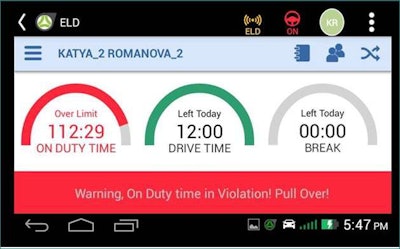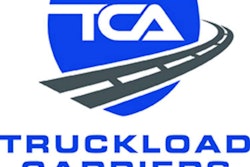
 Teletrac Navman’s Driver Post-Trip Report appears on the in-cab tablet at the end of each trip, showing how many warnings or violations the driver received on specific driving behavior like speeding or harsh braking.
Teletrac Navman’s Driver Post-Trip Report appears on the in-cab tablet at the end of each trip, showing how many warnings or violations the driver received on specific driving behavior like speeding or harsh braking.Teletrac Navman recently shared results from its 3rd Annual Telematics Benchmark Report: U.S. Edition based on survey data from transportation organizations.
The survey of 500 participants found that Electronic Logging Device (ELD) adoption at present is consistent with 2018, despite the rapidly approaching AOBRD transition deadline.
- While 66% use ELDs to track Hours of Service (HOS), 24% admitted to still using paper logs and 19% using AOBRDS.
- ELDs continue to be fleets’ top compliance concern (58%) but the percentage is down significantly from 2018 (74%).
- Nearly a third (29%) report there is no driver concern around ELDs.
Other findings show that most fleets do not have a data-driven approach to running their businesses. While 86% of fleets in the United States use telematics, only 23% said they use data analytics to guide their strategic decision-making.
Another major survey theme indicates that telematics technology is underutilized with 55 percent saying they have reduced fuel costs. On average, companies surveyed use 3 of the 12 most-common telematics features to measure general vehicle status metrics like vehicle and equipment location (74%), hours of service (66%) and speed (61%). Fewer use metrics that denote a positive bottom-line impact such as idling (37%) and fuel usage (30%).
Among the positive results the survey identified from fleets’ use of telematics is reduction in safety incidents due to increased driver performance insight.
- 42% have seen fewer safety incidents since using telematics to monitor driver behavior.
- More than a quarter cite driver monitoring (32%), speed prevention (26%) and preventing driver fatigue/exhaustion (30%) as top telematics-related safety benefits.
- 28% implement driver warning/alerting technology to further boost driver safety.
- 57% reward safe driving, with the biggest benefit of this practice being reduced safety incidents and violations (58%).
The survey also looked at non-technical challenges of fleets and found that talent retention was a major business priority amid the driver shortage. To retain drivers:
- Three of the top five driver tactics are monetary: increase pay (47%), driver appreciation programs (33%) and performance-based bonuses (30%).
- A majority of surveyed fleets 58% plan to increase drivers and equipment operators in the next year.
“This year’s survey results reveal there’s a big difference between being a tech-compliant organization and a tech-driven one,” said Sid Nair, senior director of transport and compliance, Teletrac Navman. “Putting ELDs in vehicles is not a silver bullet and, ultimately, won’t help fleets solve their business challenges as the transportation and logistics industry becomes ever more competitive.”
For more information, Teletrac Navman is holding a webinar on Sept. 26 to discuss the survey results and other industry trends. Register here for the webinar and to receive a free copy of the report.









